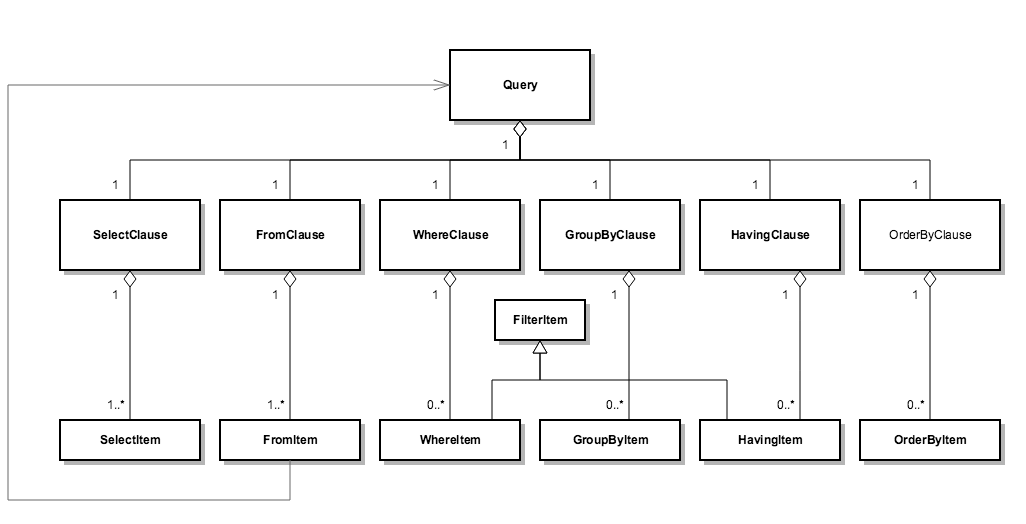
Apache MetaModel offers three different ways of defining a query for a DataContext to retrieve data. Each approach offers a set of features, making them appropriate for different situations.
Query objectAt the core of all query execution in MetaModel is the Query object. Query is a regular Java class containing the structural elements that make up a query. The main elements of a query is a set of clauses (SelectClause, FromClause and so on) which in turn each contain a set of items (SelectItem, FromItem etc.).
The object structure is depicted in the below class diagram. Each item will typically refer to some structure in the DataContext's schema model (a Table, a Column or such), or even an embedded sub-query. A query must have at least 1 SelectItem and 1 FromItem for it to be executable.

As such, you can instantiate Query and populate the object yourself:
DataContext dc = ...
Table table = dc.getDefaultSchema().getTableByName("person");
Column col1 = table.getColumnByName("id");
Column col2 = table.getColumnByName("name");
Column col3 = table.getColumnByName("age");
// Construct a query like "SELECT id, name FROM person WHERE age > 18"
Query q = new Query();
q.from(table);
q.select(col1, col2);
q.where(col3, OperatorType.GREATER_THAN, 18);
// Execute the Query
DataSet ds = dc.executeQuery(q); |
Pros:
Cons:
To make query definition easier and more developer-guided, Apache MetaModel also has the so-called Query-builder API. This term is used for the set of methods extending from a call to DataContext.query(), ending with either .toQuery() or .execute(). Using the same simple example as before, we can define and execute the query like this:
DataContext dc = ...
DataSet ds = dc.query().from("person").select("id", "name").where("age").gt(18).execute(); |
Pros:
Query class directly.Query object if you wish to immediately just execute it.Cons:
Finally, Apache MetaModel allows you to simply parse a query from a string form. You can use this feature in a two-step parse-then-execute mode or in a single step to parse-and-execute.
DataContext.executeQuery(String): DataSetDataContext.parseQuery(String): QueryThe parseQuery method allows you to interrogate or even manipulate the parsed query, potentially leveraging the control and power of the Query object approach in combination with parsing.
Note that unlike the query builder API, the sequence of query clauses in a string query is like that of SQL (select before from):
SELECT ... FROM ... [ WHERE ...] [ GROUP BY ...] [ HAVING ...] [ ORDER BY ...]
Pros:
Cons: